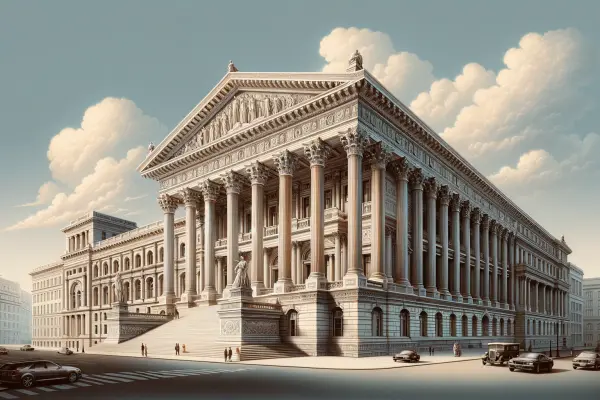Neoclassicism is an architectural movement of the late 18th to early 20th century that revived and reinterpreted the heritage of antiquity. The history of neoclassicism began as a reaction to the excesses of Baroque and the frivolity of the Rococo style, aiming to bring rationality, harmony, and the grandeur of classical forms back into art. Many scholars believe that classicism in architecture found a renewed expression during this period.
"Neoclassicism is not just an architectural style, but a philosophy of space, striving for absolute harmony between humans and their environment through clarity of forms and proportions," — notes Professor of Architectural History Thomas Gray in his book "The Language of Classical Forms."
Main Features of Neoclassical Architecture
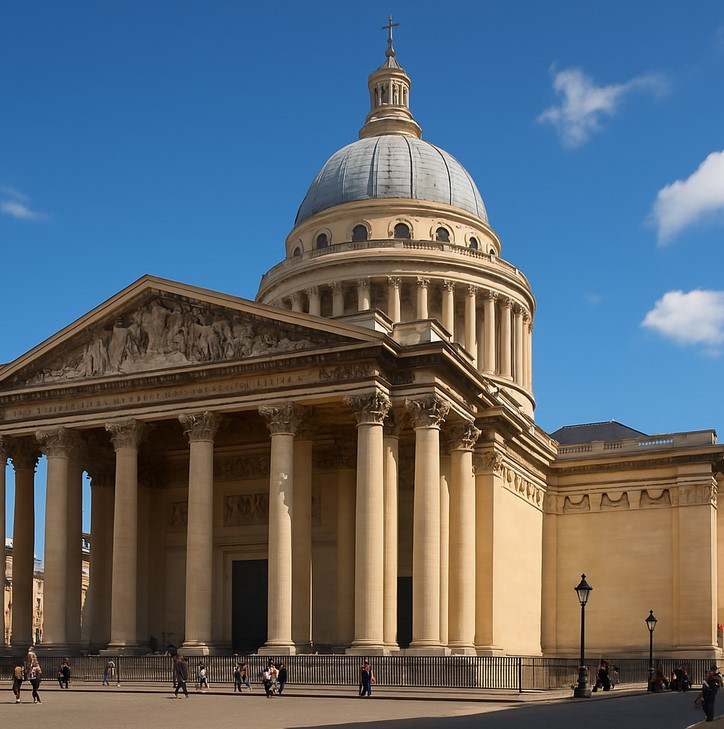 Neoclassical architecture is primarily characterized by its reference to ancient order forms and strict canons. Famous neoclassical architects created structures that embodied the ideals of beauty and perfection of Ancient Greece and Rome.
Neoclassical architecture is primarily characterized by its reference to ancient order forms and strict canons. Famous neoclassical architects created structures that embodied the ideals of beauty and perfection of Ancient Greece and Rome.
Composition and Structure of Buildings
The orders system is the foundation of the architectural language of Neoclassicism. Classical motifs appear in every structural element: the extensive use of Doric, Ionic, and Corinthian columns, as well as porticoes, pediments, and entablatures. These elements trace their origins to Egyptian architecture, where the principles of column construction and monumental proportions were first developed. Exedrae (semi-circular niches or projections), which lend elegance to buildings, also have ancient roots:
- Extensive use of columns of Doric, Ionic, and Corinthian orders
- Implementation of porticos, pediments, and entablatures as key compositional elements
- Exedras (semicircular niches or projections) that give buildings sophistication
- Domes, often decorated with coffers, as symbols of grandeur and harmony
- Sculptural decoration thematically connected to ancient subjects
Symmetry and Proportions
Facade symmetry and proportionality of all elements — key principles of neoclassical architecture:
- Strict adherence to symmetry in building planning
- Mathematically precise proportions of all elements
- Monumentality and majesty of the overall appearance of structures
- Predominance of straight lines and clear geometric forms
Meanwhile, architecture in the neoclassical style was not limited to simply copying ancient models. Masters creatively reworked classical forms taking into account new materials and construction technologies, which gave buildings greater expressiveness and functionality.
History and Spread of Neoclassicism in the World
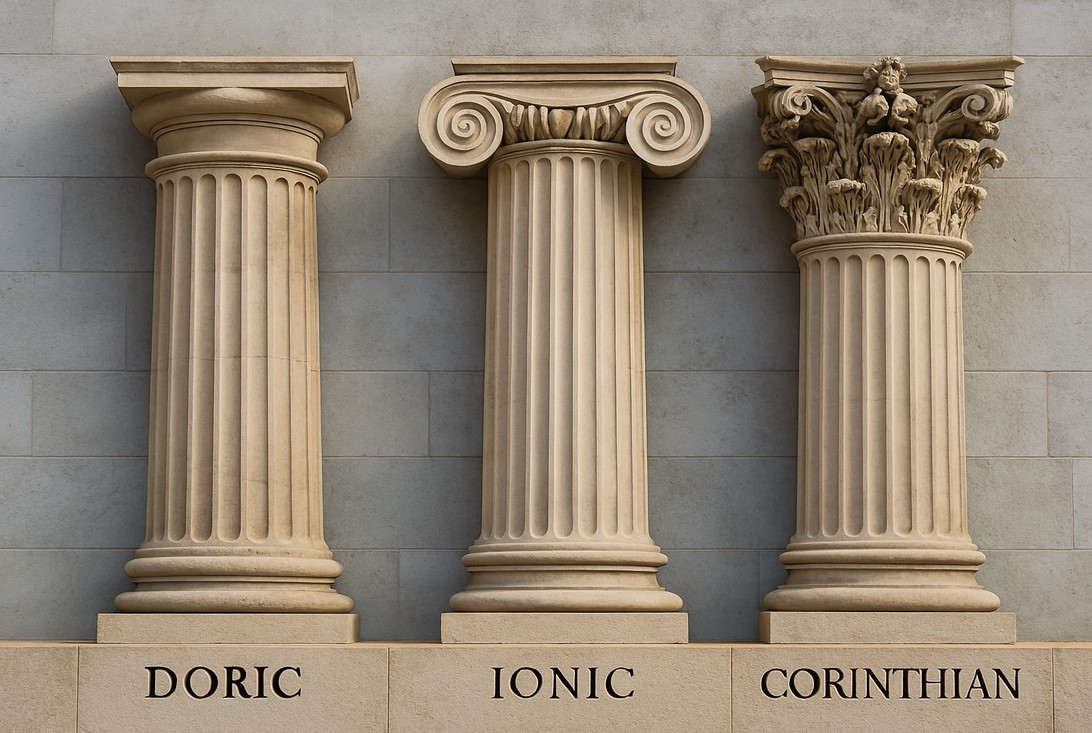 Classicism in architecture received new life in the late 18th century, largely due to archaeological discoveries in Pompeii and Herculaneum. Neoclassicism in Europe quickly gained popularity, becoming the official style of many government and public buildings.
Classicism in architecture received new life in the late 18th century, largely due to archaeological discoveries in Pompeii and Herculaneum. Neoclassicism in Europe quickly gained popularity, becoming the official style of many government and public buildings.
Neoclassicism in Europe and Russia
Neoclassicism in Russia holds a special place, where this style was perceived as a symbol of imperial grandeur. St. Petersburg, called the "Northern Palmyra," is a true open-air museum of neoclassical architecture. Classicism in architecture here acquired a special scale thanks to urban planning ensembles.
Neoclassicism in Europe developed unevenly: in France, it was connected with revolutionary aesthetics, in England – with aristocratic taste, in Germany – with national identity. Nevertheless, the revival of ancient heritage became a unifying idea for the entire continent.
Neoclassicism in Other Regions
Neoclassicism spread not only in Europe but also in other parts of the world. It was particularly prominent in Latin America, where it became a symbol of independence and new nation-states. Outstanding public buildings in this style were constructed in Argentina and Brazil. In Eastern Europe (Poland, Romania, Hungary), neoclassicism reflected the aspiration toward European identity and cultural values.
| Country | Period of Flourishing | Characteristics | Iconic Structures |
|---|---|---|---|
| France | 1760-1830 | Austerity of forms, grandeur, imperial influence | Madeleine Church, Pantheon in Paris |
| Italy | 1750-1850 | Strong influence of ancient heritage, rationalism | La Scala Theater, Villa Reale |
| Russia | 1770-1840 | Monumentality, imperial scale, ensemble approach | Kazan Cathedral, Admiralty |
| Great Britain | 1750-1830 | Aristocratism, proportionality, practicality | British Museum, Bank of England building |
| USA | 1780-1830 | Symbolism of democracy, civic pathos | White House, Capitol |
This table clearly demonstrates how neoclassicism, while maintaining common features, acquired national characteristics in different countries, reflecting local traditions and needs.
| Style | Period | Main Features | Relationship to Antiquity | Characteristic Elements |
|---|---|---|---|---|
| Neoclassicism | 1750-1850 | Rationality, symmetry, harmony | Direct reference to Greco-Roman examples | Columns, porticos, pediments |
| Baroque | 1600-1750 | Dynamics, lavishness, theatricality | Free interpretation | Volutes, complex forms, abundance of decor |
| Empire | 1800-1840 | Monumentality, ceremonial nature, imperial pathos | Emphasis on Roman examples | Military symbolism, Egyptian motifs |
| Eclecticism | 1830-1890 | Mixture of styles, decorativeness | Selective use of elements | Multi-style decor, asymmetry |
| Art Nouveau | 1890-1910 | Innovation, organicity, asymmetry | Rejection of ancient canons | Plant motifs, flowing lines |
This table helps understand the place of neoclassicism in the development of architecture and its differences from adjacent styles. It is especially important to distinguish between neoclassicism and the Empire style, which was its variation during the era of Napoleon I and was characterized by greater pomposity and military symbolism.
"In Russia, neoclassicism became not just a style, but part of the national consciousness, a symphony in stone celebrating the ideals of enlightenment and statehood," — wrote architectural historian Vladimir Kirillov.
Outstanding Architects of Neoclassicism
The development of neoclassicism is associated with the work of many talented architects who were able to reinterpret the ancient heritage:
- Jacques-Germain Soufflot (1713-1780) — French architect, creator of the Paris Pantheon, who combined classical principles with innovative structural solutions
- Robert Adam (1728-1792) — Scottish architect who developed the "Adam style," which adapted classical motifs for interiors of aristocratic homes
- Carlo Rossi (1775-1849) — Russian architect of Italian origin, creator of unique architectural ensembles in St. Petersburg
- John Nash (1752-1835) — British architect, designer of Regent's Park and Buckingham Palace in London
- Charles Cameron (1745-1812) — Scottish architect who worked in Russia and created pavilions at Tsarskoye Selo
Examples of Neoclassicism: Architectural Masterpieces
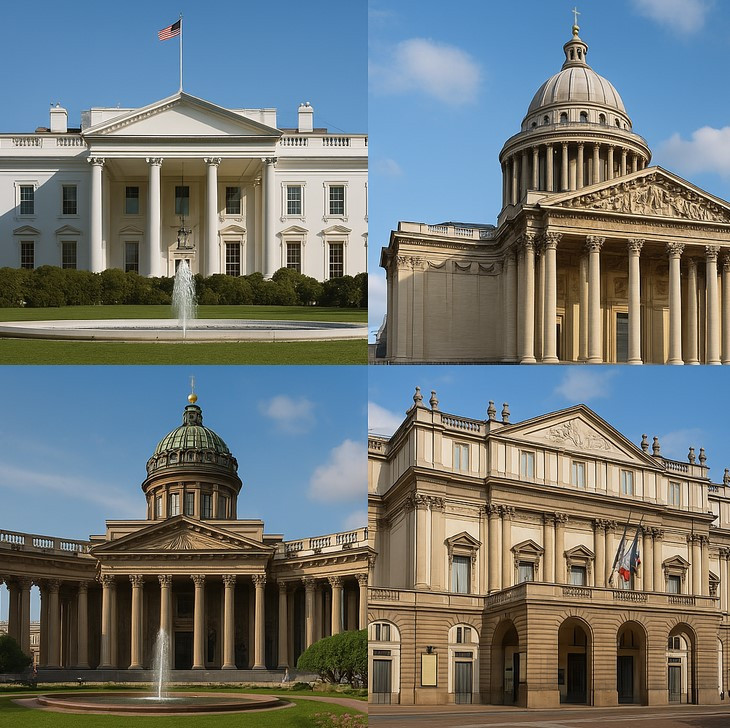 Examples of neoclassicism include many outstanding structures around the world. These buildings still impress with their grandeur and harmonious proportions.
Examples of neoclassicism include many outstanding structures around the world. These buildings still impress with their grandeur and harmonious proportions.
Famous Monuments
- Victoria and Albert Museum in London with its impressive Corinthian columns
- Lincoln Memorial in Washington, inspired by the architecture of Ancient Greece
- Bolshoi Theater in Moscow, a symbol of Russian neoclassicism
- Brandenburg Gate in Berlin, created based on the Athenian Acropolis
- Pantheon in Paris, combining the austerity and solemnity of ancient forms
Less Known but Significant Examples
- Opera House in Budapest (Hungarian State Opera) with its rich sculptural decoration
- Neoclassical buildings in the center of Tbilisi (Georgia), reflecting a unique synthesis of European and Caucasian traditions
- Casa Rosada Palace in Buenos Aires, symbolizing Argentina's independence
Success Story: Revival of a St. Petersburg Mansion
When architect Mikhail Sorkin was approached with a request to restore a half-ruined 18th-century mansion in the center of St. Petersburg, many doubted the project's success. The building, built in the neoclassical style, had suffered badly from time and careless use. "When I first entered the mansion, the floors and plaster were literally collapsing, but the preserved order details of the facade were so perfect that I immediately decided to take on the project," — Sorkin recalls. The architect not only restored the historical appearance of the building but also adapted it for modern use, turning it into a prestigious business center. Today, this building — is an example of how neoclassical forms organically exist in a modern urban context, attracting tourists' attention and earning professionals' admiration.
Neoclassicism in Modern Architecture and Design
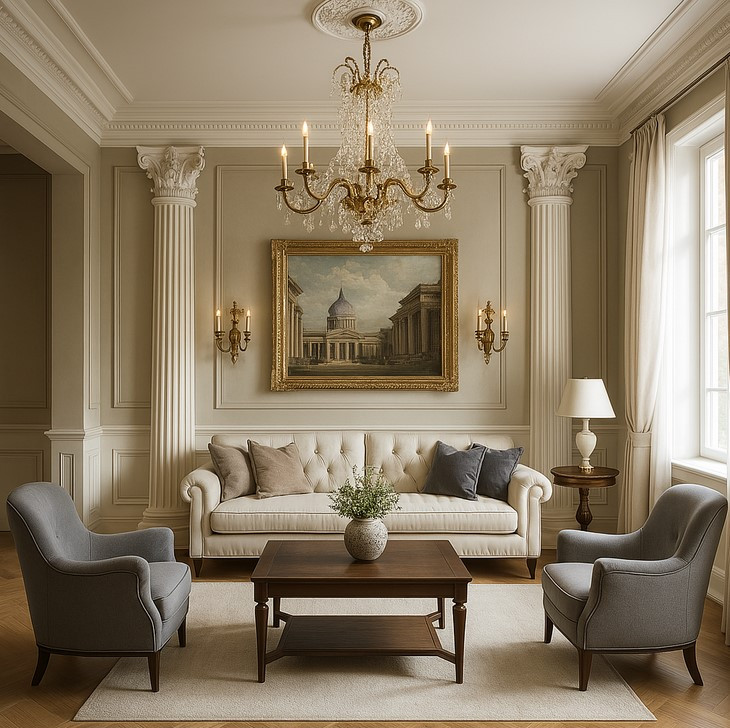 Designing houses in the neoclassical style remains popular today. Many clients choose this style for their mansions and residences, valuing its timeless elegance and status.
Designing houses in the neoclassical style remains popular today. Many clients choose this style for their mansions and residences, valuing its timeless elegance and status.
Interior design in the neoclassical style also enjoys steady demand. Features of this approach include:
- Symmetrical layout of rooms
- Use of columns and pilasters in interior spaces
- Application of stucco and classical ornaments
- Neutral color palette with accents in gold and silver
- Furniture inspired by ancient and classicist examples
"Modern neoclassicism is not stylization, but a reinterpretation of the eternal values of classical architecture in the context of the 21st century. It appeals to historical memory but speaks in a modern language," — believes renowned designer Elena Veksler, who has created more than 50 interiors in the neoclassical style.
Criticism of Neoclassicism in Architectural Theory
Despite recognized artistic merits, neoclassicism did not escape criticism from architectural theorists and representatives of other stylistic directions. The main critical arguments included:
- Accusations of excessive academicism and detachment from current social needs
- Criticism of formalism and imitation, lack of originality
- Reproaches of conservatism and opposition to architectural innovations
- Indications of the inconsistency of ancient forms with modern functional requirements
Nevertheless, it was this connection with the classical tradition that ensured neoclassicism's longevity and influence on subsequent architectural styles, including modernism, which paradoxically borrowed principles of order and rationality from neoclassicism.
Studying Neoclassical Architecture Today
For those interested in neoclassical architecture, there are various opportunities to deepen their knowledge. Courses on neoclassical architecture are conducted in many architectural universities and cultural centers, such as MARCHI (Moscow Architectural Institute), the Courtauld Institute of Art in London, or the Barcelona School of Architecture. For example, a practicing architect can take specialized courses on neoclassical architecture lasting from 3 months to a year.
Books about neoclassicism represent a valuable source of information for professionals and amateurs. Publications such as "Neoclassicism in Russian Architecture" by V.G. Lisovsky, "The Classical Language of Architecture" by John Summerson, and "Neoclassicism: History and Theory" by D. Irwin are particularly popular. These books on neoclassicism provide a complete picture of the style's development in different countries.
Tours of neoclassical buildings are organized in various cities around the world for architecture enthusiasts. Such excursions allow not only seeing neoclassical masterpieces with one's own eyes but also receiving qualified comments from specialists. Tours of neoclassical buildings in St. Petersburg, Paris, or London are especially popular among architectural connoisseurs.
Modern Embodiments of the Style
Designing houses in the neoclassical style continues to be a sought-after direction in modern architecture. Clients value the respectability and timeless elegance of such buildings. Designing houses in the neoclassical style requires a deep understanding of the principles of this direction and the ability to adapt them to modern requirements for comfort and functionality.
Interior design in the neoclassical style also remains popular. Characteristic features of such an interior – symmetry, proportionality, use of order elements, and a calm color scheme. The neoclassical style is timeless and combines beautifully with modern transitional design, remaining both refined and luxurious. Interior design in the neoclassical style is appropriate in both private residences and representative premises.
Conclusion
Neoclassicism in architecture — is not just a style of the past, but a living heritage that continues to influence modern architecture. The history of neoclassicism demonstrates how classicism in architecture can be reborn in new forms. Harmony of proportions, clarity of forms, revival of ancient heritage, and aspiration to the ideal — all these features make the architectural style of neoclassicism timeless and relevant even in the era of postmodernism and digital technologies. Columns, pediments, porticos continue to inspire new generations of architects, reminding of the eternal values of beauty, balance, and order.
